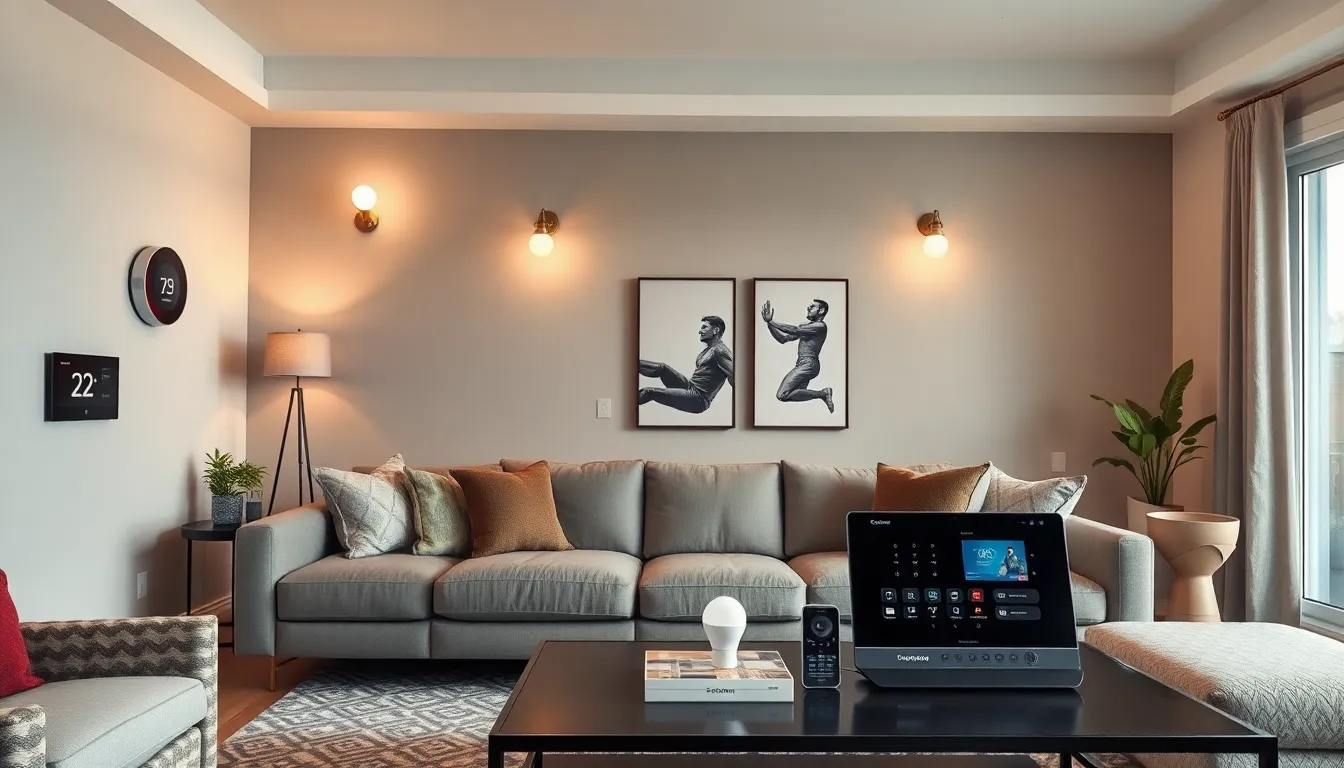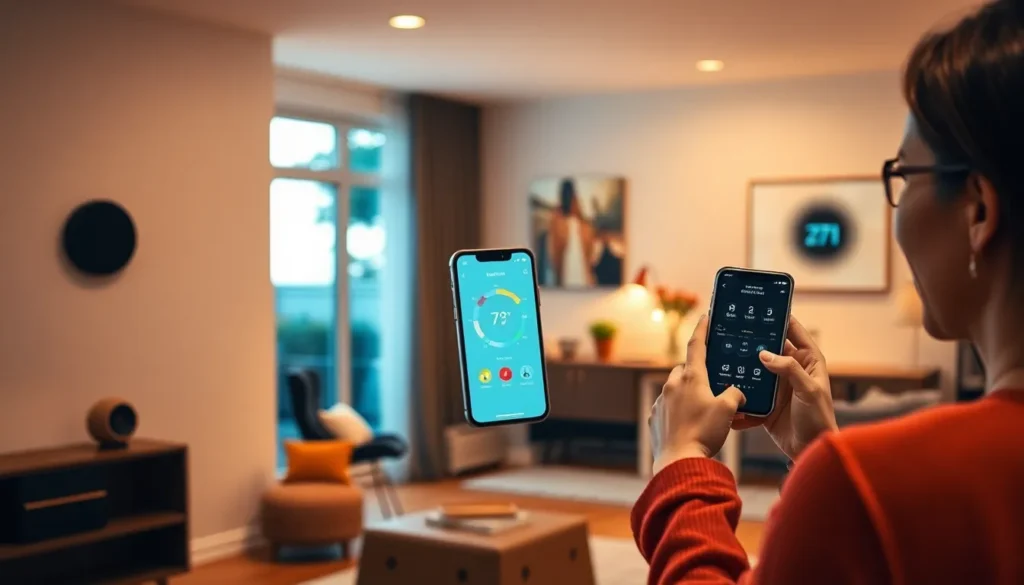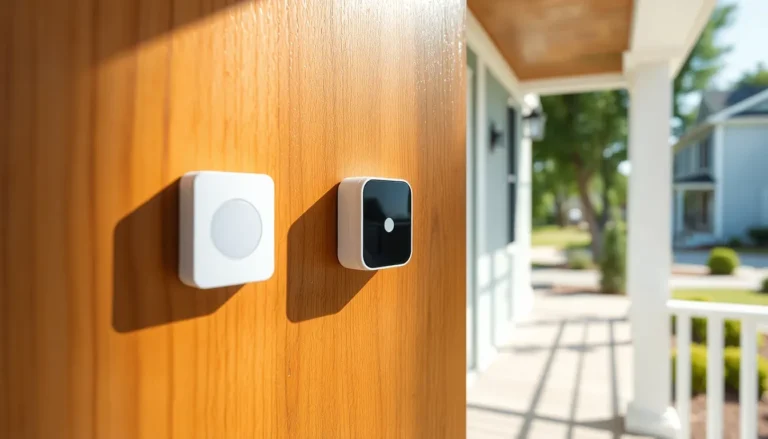Table of Contents
ToggleImagine walking into your home and having it greet you like an old friend. That’s the magic of smart home devices. These nifty gadgets don’t just make life easier; they turn everyday living into a seamless experience. From adjusting the thermostat with a simple voice command to dimming the lights for movie night, smart devices can make anyone feel like a tech wizard—even if they still struggle to program their microwave.
Overview of Smart Home Devices
Smart home devices represent a significant advancement in home automation technology. These gadgets connect to a central system, allowing seamless control of various household functions. Users can easily adjust settings for lights, security systems, thermostats, and appliances from a smartphone or a voice-activated assistant.
The functionality of these devices enhances daily routines. Consider smart speakers that facilitate music playback and answer questions. Smart thermostats provide energy savings by learning individual preferences and adjusting accordingly. Automated lighting systems create the ideal ambiance for any occasion, whether it’s a cozy family dinner or a lively gathering.
These devices also enhance home security. Smart cameras and doorbell systems allow real-time monitoring of entrances. Notifications alert homeowners to unusual activity. This level of security fosters peace of mind, even when away from home.
Compatibility with other smart devices ensures a streamlined experience. Many platforms allow integration of various products from different manufacturers. This allows users the flexibility to create personalized smart home ecosystems tailored to their needs.
Energy efficiency gains contribute to sustainability goals. Smart appliances, such as refrigerators and washing machines, optimize energy usage, lowering utility bills. Users can track their consumption habits and make adjustments to improve efficiency.
Many consumers are drawn to the convenience and control that smart home devices offer. By automating routine tasks, they save time and effort. The simple act of scheduling lights to turn on at dusk or setting the thermostat before returning from work illustrates the ease of managing a smart home.
Types of Smart Home Devices

Smart home devices come in various forms, each offering unique benefits that enhance home automation. These devices cater to different needs, from security to energy efficiency.
Smart Security Systems
Smart security systems offer real-time monitoring and alerts for unusual activities. Users can access their security feeds from smartphones, allowing for remote surveillance. Features may include motion detection, doorbell cameras, and alarms that integrate seamlessly with other devices. Many smart locks allow for keyless entries, enhancing convenience without compromising security. With these systems, users can easily manage their home’s safety while away.
Smart Lighting
Smart lighting solutions enable users to control home illumination from anywhere. Options include adjustable brightness and color settings, which can be tailored for various moods. Many smart bulbs integrate with voice control systems, allowing for hands-free operation. Scheduling features help automate lighting according to daily routines, enhancing energy efficiency. These devices not only provide convenience but also improve home ambiance.
Smart Thermostats
Smart thermostats optimize energy consumption by learning user preferences and adapting automatically. They allow users to adjust home temperatures remotely via apps. Many devices provide detailed reports on energy usage, helping to identify areas for savings. Zones can be created for specific rooms, ensuring comfort where it’s needed most. Overall, these devices contribute significantly to energy efficiency and cost savings.
Smart Appliances
Smart appliances transform everyday tasks with automation and remote control. Refrigerators can track inventory, alerting users when items run low. Ovens and washing machines allow for programming cycles from mobile devices, enhancing convenience. Many smart appliances offer energy monitoring features, promoting sustainability. These devices simplify daily chores while providing greater insight into household operations.
Benefits of Smart Home Devices
Smart home devices offer several advantages that enhance lifestyle and home management. Their features significantly simplify daily activities, resulting in increased efficiency and functionality.
Convenience and Automation
Smart home devices streamline daily tasks through automation. Voice-activated assistants control gadgets such as lights and thermostats, reducing the need for manual adjustments. Scheduling capabilities allow users to set times for operations, like turning on outdoor lights at dusk. With mobile apps, users manage devices remotely from anywhere. These features create a seamless environment, making life easier for busy individuals and families.
Energy Efficiency
Energy savings represent a key benefit of smart home devices. Smart thermostats adjust temperatures automatically based on user preferences and occupancy patterns, reducing wasted energy. This intelligent automation results in a more efficient heating and cooling system. Additionally, smart lighting systems enable users to control brightness and set timers, which curtails unnecessary energy consumption. Homeowners often notice a decrease in utility bills, contributing to a sustainable lifestyle.
Enhanced Security
Smart home devices significantly improve security measures within households. Real-time monitoring systems keep an eye on properties through cameras and motion sensors, alerting homeowners to unusual activity. Devices like smart locks enable remote locking and unlocking, providing peace of mind. Notifications sent to smartphones alert users to potential threats, ensuring swift responses. This integration allows for personalized security solutions tailored to each individual’s needs, enhancing overall home protection.
Considerations When Choosing Smart Home Devices
Selecting the right smart home devices requires careful consideration of various factors. Understanding these elements ensures an optimal setup that meets specific needs.
Compatibility with Existing Systems
Compatibility with existing systems plays a crucial role in smart home integration. Many devices must operate seamlessly with wireless protocols like Wi-Fi or Zigbee. Choosing devices that align with current home networks minimizes connectivity issues. Researching compatibility with platforms like Google Assistant or Amazon Alexa also enhances the user experience. Ensuring that new devices can interact with each other fosters a cohesive smart home ecosystem.
Privacy and Security Concerns
Privacy and security concerns are paramount when considering smart home devices. Many gadgets collect data to enhance functionality, raising potential risks. Prioritizing devices with strong security features, such as encryption, protects personal information. Regularly updating device software reduces vulnerabilities against hacks. Reviewing privacy policies helps users understand how data is collected and shared. Safeguarding personal data fosters a secure smart home environment.
Cost vs. Value
Cost vs. value is a critical consideration when choosing smart home devices. Initial purchase price does not always reflect long-term savings and benefits. Analyzing energy-efficient models often leads to lower utility bills. Some devices may require additional subscription fees, impacting overall expenses. Understanding the lifetime value of devices ensures informed decisions. Balancing upfront costs with potential savings maximizes return on investment.
Smart home devices represent a significant leap forward in convenience and efficiency. They not only simplify daily tasks but also enhance security and energy management. By integrating these devices into their homes, users can enjoy a more streamlined lifestyle tailored to their preferences.
The ability to control various aspects of home life from a single platform makes these gadgets invaluable. As technology continues to evolve, smart home devices will likely become even more intuitive and interconnected. Embracing this technology not only improves everyday living but also contributes to a more sustainable future. With the right choices, anyone can transform their home into a smart haven that offers comfort and peace of mind.







